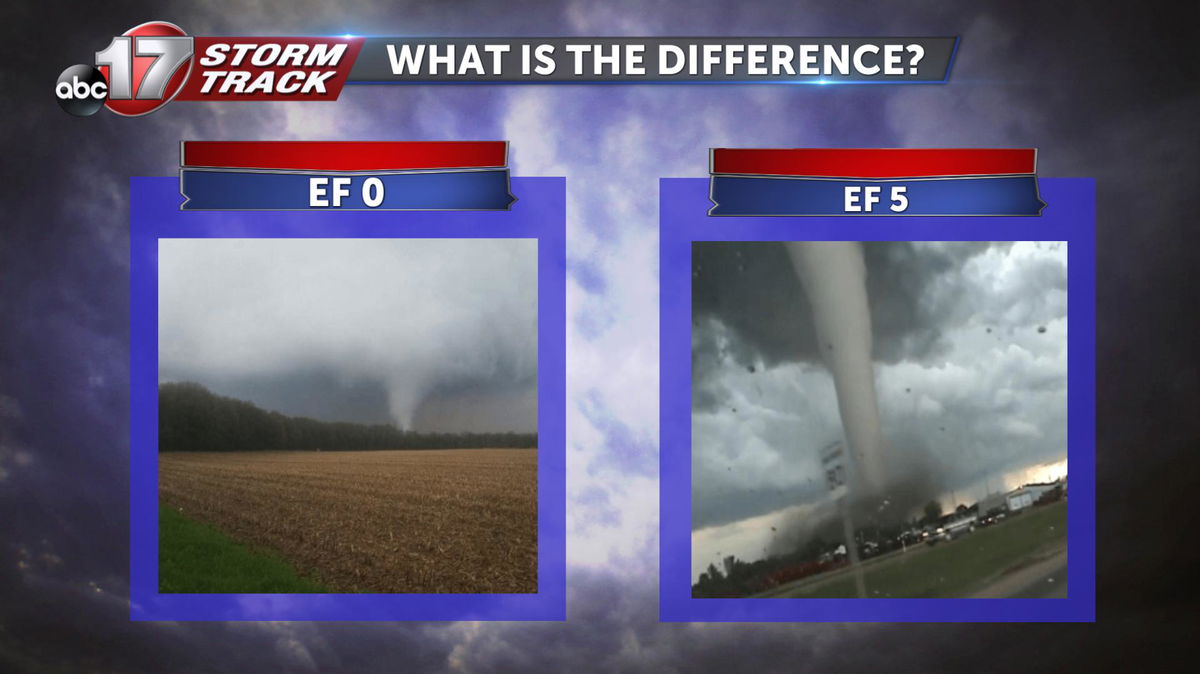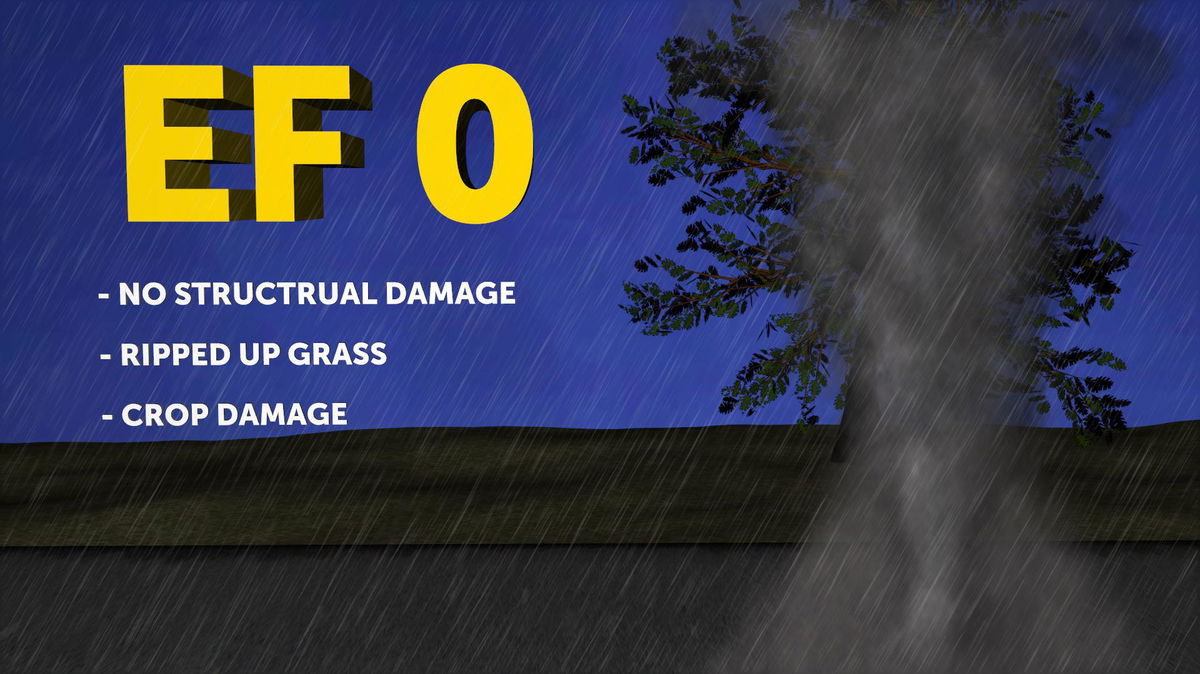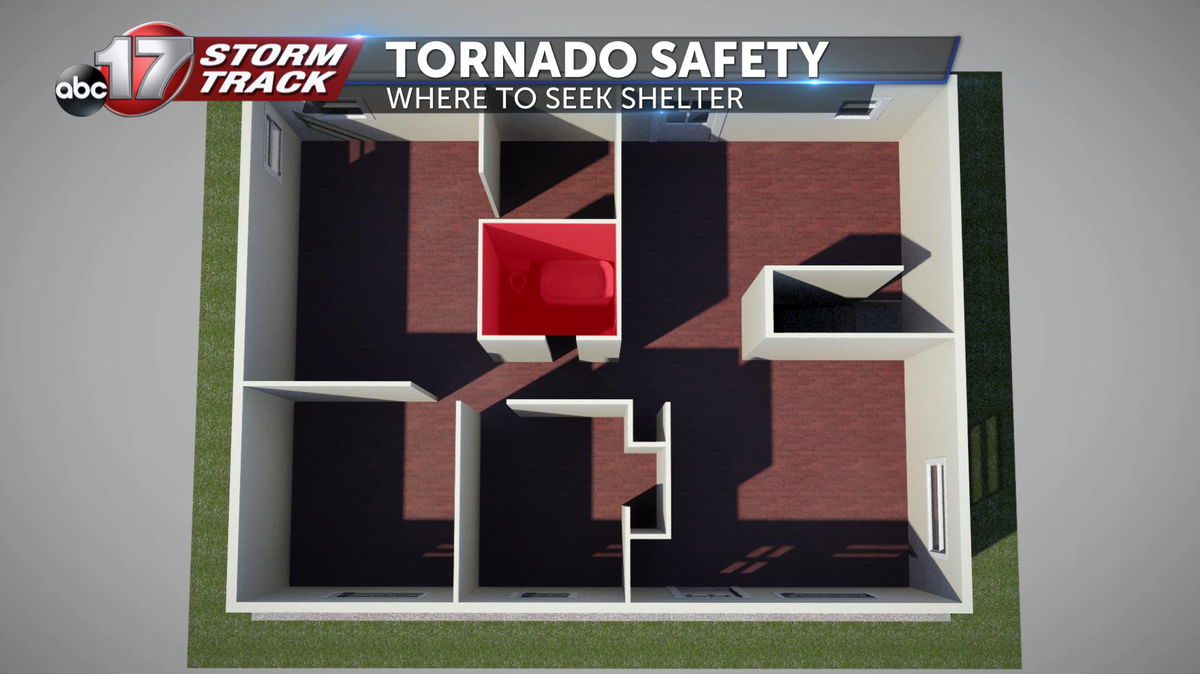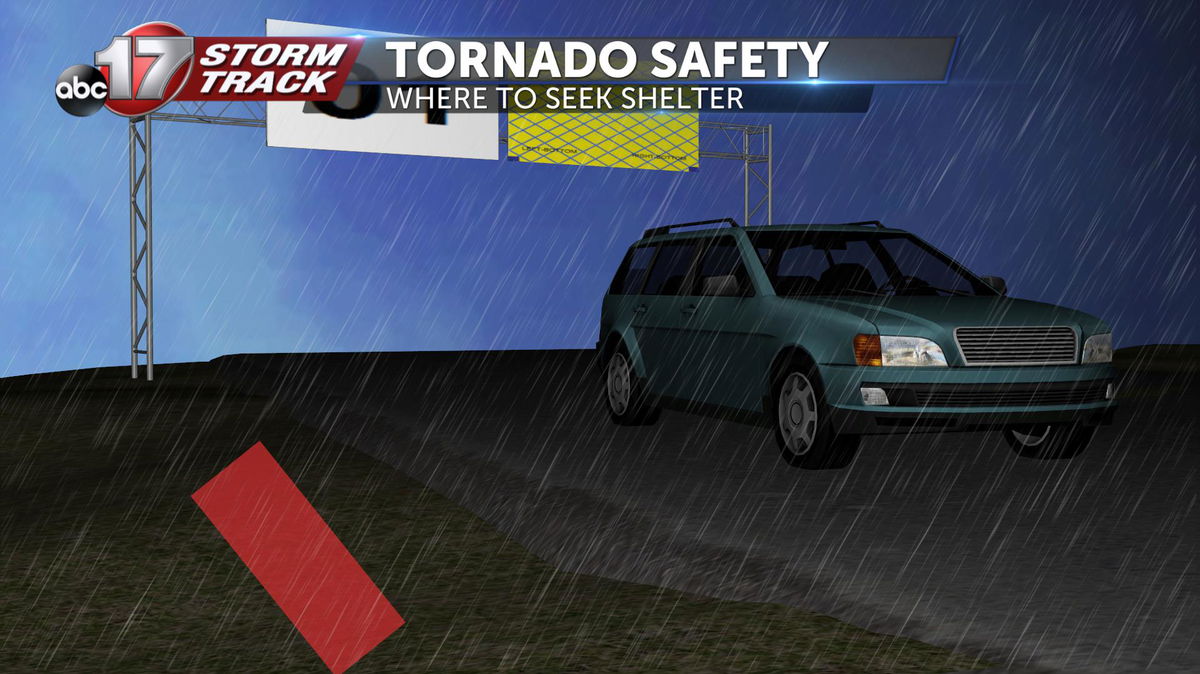Enhanced Fujita Scale: What it means and how meteorologists use it

Take a look at these two tornadoes. They look similar in size and in structure but they were rated very differently. On the left is an EF-0 tornado, the weakest on the EF scale and on the right an EF-5, the strongest. But how are they so different when they look so similar? I took the time to get those answers.

The Fujita scale was a method of categorizing the wind speed and damage that a tornado was capable of and was named after Ted Fujita, a meteorologist out of the University of Chicago. The Enhanced Fujita Scale, or EF scale, was put into operational use on Feb. 1, 2007, and is the improved version of the Fujita scale.
The F scale is no longer in use because the Enhanced Fujita scale is better at gauging the wind speed of a storm.

It is nearly impossible to predict the exact path of a tornado before it starts, meaning that it would be pointless and dangerous to have someone try to set up measurement instruments in the path of the storm. That is where the EF scale comes in. The EF rating is determined after the tornado happens.

The National Weather Service will come out to survey the damage done by a tornado after the storm passes. They will judge the strength of the tornado by the destruction it has caused.
The experts base that destruction on 28 factors on their own scale. For example, if a house is being surveyed, the damage could be anywhere from a few shingles missing all the way to a completely flattened structure. This process usually takes two or three days to complete but could take over a week during a tornado outbreak.

An EF-0 will likely happen out in a field because it causes minimal damage -- mainly ripped up grass or crops and down trees. However, just because a tornado is rated an EF-0 or a "weak" tornado does not mean that it wasn't a strong tornado.
A tornado could potentially have wind speeds exceeding 200 mph but because the rating is given via damage report, if a tornado touches down in a field and does no damage it will still be categorized as an EF-0. This may affect mid-Missourians because much of our land is rural.

An EF-5 tornado is rare -- since the year 1950, there have only been 59 EF-5 tornadoes in the United States. That is less than one per year!
These types of tornadoes happen in more populated or metro areas because there are more structures and buildings, possibly leading to greater devastation. This gives more material for the National Weather Service to analyze leading to more accurate reports and ratings.

Regardless of its strength or scale, any and all tornadoes are dangerous and should be taken seriously. They can grow and shrink rapidly, leaving you with not much time to shelter if one is headed in your direction.
Make sure that you know where to shelter in place in your home ahead of time in case you find yourself and family in the path of a potential tornado. If you have a basement, that is the safest place to be. Stay clear of any windows or doors if your basement has them.

If you do not live in a structure with a basement, the best place to shelter is the most interior room of your home. This could be a bathroom or a closet. Choose a room without any windows if possible. Get down as low as you can and cover your head and neck with your hands.

If you are in the car and driving while in the path of a tornado you should do one of two things. If you far enough away from the storm, drive in a 90-degree angle away from the twister. If you are too close to the storm and cannot get away, pull over to the side of the road, get out of the car and lie flat on your stomach in a ditch or low-lying area. The flatter you make yourself the less likely it will be that you get picked up.
DO NOT STAY IN YOUR CAR! Also, do not seek shelter under an overpass -- it acts as a vacuum during a tornado and anything in or under it will be sucked away.

Have a plan of action with your family if a twister hits Mid-Missouri again. Allow us to keep you and your family updated with the free ABC 17 Stormtrack Weather App that you can download on the Apple App Store or Google Play store.
There is interactive radar and you can tune in to live storm coverage that you can take anywhere you go. It is always a good idea to have two methods of receiving information during an emergency so if you need to seek shelter, also bring your NOAA weather radio.
